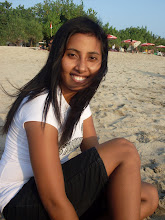Rote Island (Indonesian: Pulau Rote, also spelled Roti) is an island of Indonesia, part of the East Nusa Tenggara province of the Lesser Sunda Islands. It has an area of 1200 km². It lies 500 km northeast of the Australian coast and 170 km northeast of the Ashmore and Cartier Islands. The island is situated to the southwest of the larger island of Timor. To the north is the Savu Sea, and to the south is the Timor Sea. To the west is Savu and Sumba. The uninhabited Dana Island (also called Ndana), just south of Rote, with an area of 14 km², is the southernmost island of Indonesia. Along with some other nearby small islands, such as Ndao, it forms the kabupaten (regency) of Roti Ndao, which in 2005 held an estimated population of 108,615.
The main town, called Ba'a, is located in the north of the island. It has a good surf area in the south around the village of Nembralla. There is a daily ferry to the island from Kupang, the provincial capital on West Timor, which brings tourists.
Rote has many historical relies including fine antique Chinese porcelains, as well as ancient arts and traditions. Many prominent Indonesia nationalist leaders were born here. A popular music instrument Sasando, which is made of palm leaves. According to legend, this island got its name accidentally when a lost Portuguese sailor arrived and asked a farmer where he was. The surprised farmer, who could not speaking Portuguese, introduced himself, "Rote".
Rote just off the southern tip of Timor Island consists of rolling hills, terraced plantations, and acacia palm, savanna and some forests. The Rotinese depend, like the Savunese, on lontar palm for basic survival, but also as the supplement their income with fishing and jewelry making.
Agriculture is the main form of employment. Fishing is also important, especially in the eastern village of
Papela, which has led to disputes with Australia over the water between themh
Source: http://en.wikipedia.org/wiki/Rote_Island
 Bo'a Beach is located in the west part of Nembrala beach in Rote Island. I has great waves and very good for surfing during April - October.
Bo'a Beach is located in the west part of Nembrala beach in Rote Island. I has great waves and very good for surfing during April - October.




